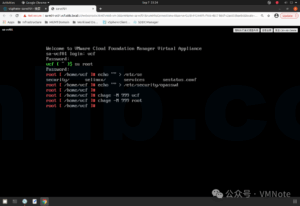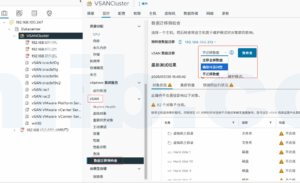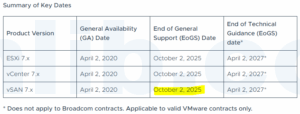To study for VMware HCI Master Specialist Exam | vSAN认证考试题目学习
87. An architect is reviewing a vSAN cluster that has an unbalanced cluster configuration. Which behavior will the architect observe?
- A.Consistent maintenance procedures
- B.Reduced predictability of storage performance
- C.Reduced deduplication capabilities
- D.Faster rebuild times
Explaination:
When an architect reviews a vSAN cluster that has an unbalanced cluster configuration, the behavior observed is likely to be B. Reduced predictability of storage performance.
VMware vSAN is a software-defined storage solution that integrates with the VMware ESXi hypervisor and aggregates local or direct-attached data storage devices to create a single storage pool shared across all hosts in a vSAN cluster. An unbalanced cluster configuration can occur when the storage or compute resources are unevenly distributed across the cluster nodes. This can lead to several issues, including:
- Reduced predictability of storage performance: When the cluster is unbalanced, some nodes may have significantly more storage or compute load than others. This can lead to hotspots where certain nodes are overutilized while others are underutilized, resulting in inconsistent and unpredictable performance across the cluster. Workloads running on overutilized nodes may experience higher latency and lower throughput compared to workloads on underutilized nodes.
- A, Consistent maintenance procedures: This option doesn’t directly relate to the consequences of an unbalanced cluster configuration. While consistent maintenance procedures are important for the health and efficiency of a vSAN cluster, they don’t directly affect the behavior observed due to an unbalanced configuration.
- C, Reduced deduplication capabilities: Deduplication efficiency in vSAN is more related to the nature of the stored data rather than the balance of the cluster configuration. An unbalanced cluster might indirectly affect deduplication if certain types of data are localized to specific nodes, but it is not the primary behavior observed with imbalance.
- D, Faster rebuild times: An unbalanced cluster configuration can actually lead to longer rebuild times rather than faster. If a node fails or needs to be taken offline for maintenance, the rebalancing and data migration processes can take longer if the cluster’s resources were not evenly distributed, to begin with. This is because the remaining nodes might not have enough capacity or performance headroom to efficiently absorb the additional load.
Therefore, the most direct and significant impact of an unbalanced vSAN cluster configuration is on the predictability and consistency of storage performance across the cluster.
- 一位架构师正在审查一个具有不平衡集群配置的vSAN集群。建筑师将观察到哪种行为?
- A.一致的维护程序
- B.存储性能的可预测性降低
- C.去重能力减少
- D.更快的重建时间
解释:
当架构师审查一个具有不平衡集群配置的vSAN集群时,观察到的行为很可能是
B.存储性能的可预测性降低。
VMware vSAN是一种软件定义的存储解决方案,它与VMware ESXi虚拟机监视器集成,并聚合本地或直接连接的数据存储设备以创建一个跨所有主机共享的单一存储池。当存储或计算资源在集群节点之间分配不均时,可能会出现不平衡的集群配置。这可能导致几个问题,包括:
存储性能的可预测性降低:当集群不平衡时,一些节点可能比其他节点承担更多的存储或计算负载。这可能导致热点问题,某些节点过度利用而其他节点利用不足,导致整个集群的性能不一致和不可预测。运行在过度利用节点上的工作负载可能会经历更高的延迟和较低的吞吐量,与运行在利用不足节点上的工作负载相比。
A,一致的维护程序:这个选项与不平衡集群配置的后果不直接相关。尽管一致的维护程序对于vSAN集群的健康和效率很重要,但它们不直接影响由于不平衡配置观察到的行为。
C,去重能力减少:vSAN中的去重效率更多地与存储数据的性质相关,而不是集群配置的平衡性。如果某些类型的数据局限于特定节点,不平衡的集群可能间接影响去重,但这不是不平衡带来的主要行为。
D,更快的重建时间:不平衡的集群配置实际上可能导致重建时间更长而不是更快。如果节点失败或需要进行维护而离线,如果一开始资源就没有均匀分布,重平衡和数据迁移过程可能需要更长时间。这是因为剩余的节点可能没有足够的容量或性能余地来高效地吸收额外的负载。
因此,不平衡的vSAN集群配置最直接和最重要的影响是集群存储性能的可预测性和一致性。






 VM技术助理
VM技术助理














